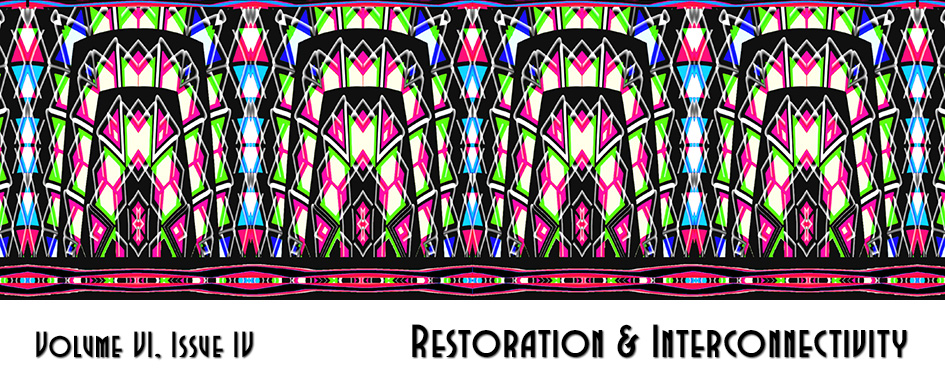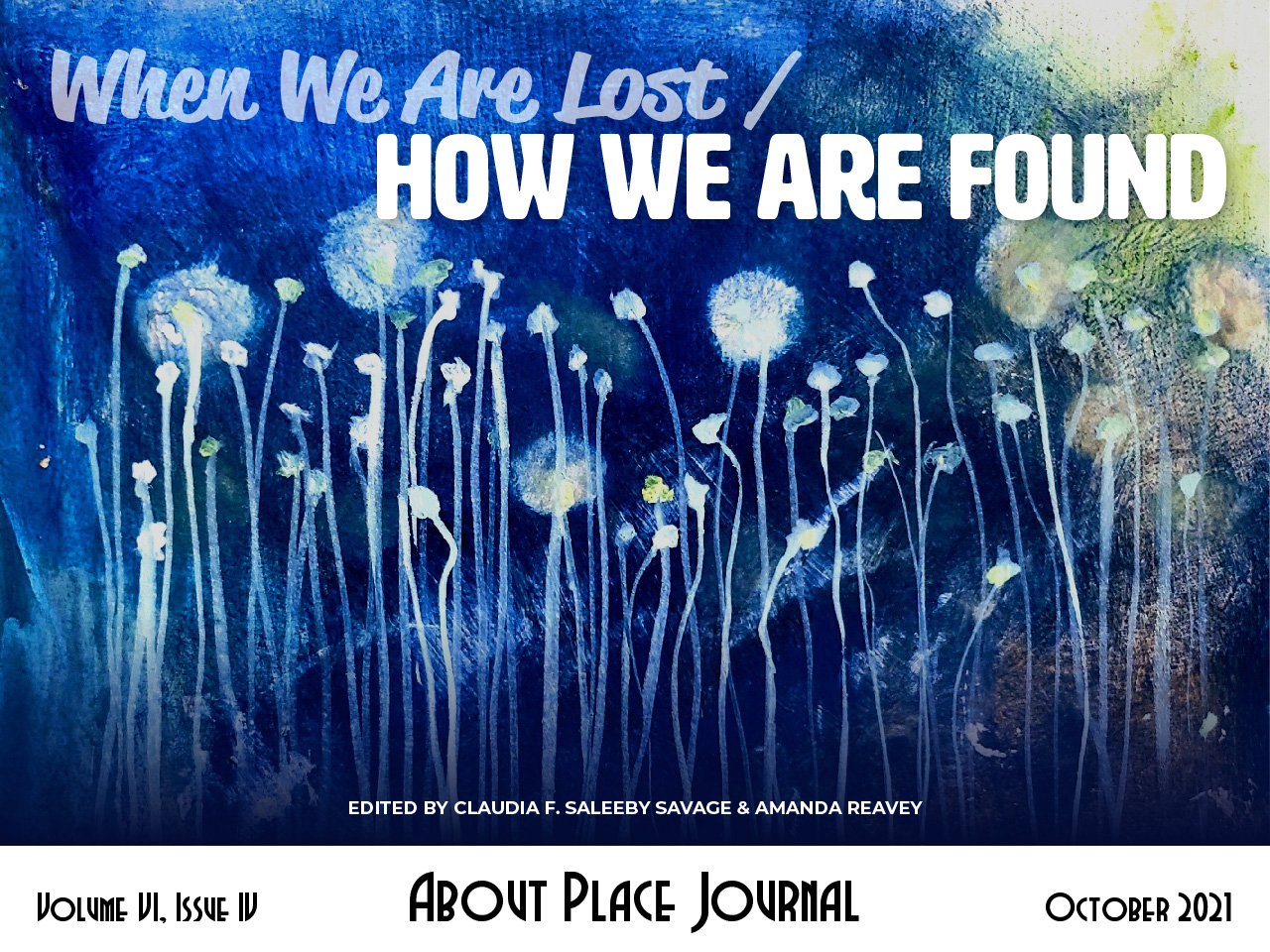Land Acknowledgment:
This is a discussion of the restorying of the land at 909 Lindsey Street in Denton, Texas that took place for 3 years between 2019–2021. Firstly, we acknowledge this is a story of stolen land, constantly undergoing new forms of colonialism in the Anthropocene. This land is part of the occupied/unceded/seized territory of the Wichita and Caddo Affiliated Tribes of North Texas. These tribes have stewarded this land throughout the generations and we would like to pay our respects to elders, both past and present. We acknowledge indigenous peoples and natural entities have sustainably lived with this land for time immemorial.
Introduction:
The land at 909 Lindsey Street is currently owned by the Texas Department of Transportation (TDOT) and is considered an empty, or nonconforming, lot off the IH-35E North highway frontage road. Its total area is 15,986.84 ft² (1,485.23 m²). Nonconforming lot means “a lot, the area, dimensions or location of which was lawful prior to the adoption, revision or amendment of the Zoning Code, but which fails by reason of such adoption, revision or amendment to conform to the present requirements of the zoning district[1].”
Google Street View:
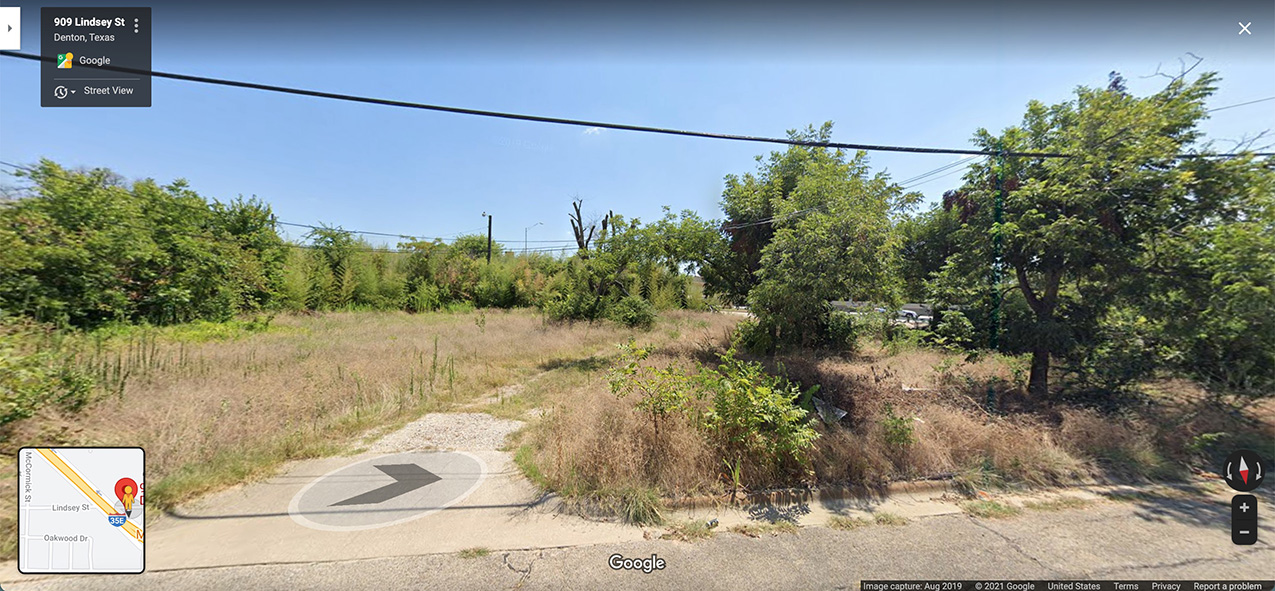
Restoryation and Conservation Conversation: This parcel of nature/land has been abandoned and ignored by society. How do we ‘adopt’ the land and connect, restory, and co-respond to it? These observations and conversations reveal the ways the land and its various co-inhabitants have responded to us, and how working with the land has been a collaborative project in our creative work and processes.
Maria: After living next to this piece of land for 3 years, I have observed the following:
- Birds: Cardinal (Cardinalis cardinalis), Blue Jay (Cyanocitta cristata), Mourning Dove (Zenaida macroura), Cooper’s Hawk (Accipiter cooperii), House Sparrow (Passer domesticus).
- Other animals: squirrels, lizards, spiders, butterflies, worms, moths, and other insects.
- Flowers: Giant spiderwort (Tradescantia Gigantea), Prairie verbena (Glandularia bipinnatifida), Antelope horns (Asclepias Asperula), Pink evening primrose (Oenothera speciosa), Cedar sage (Salvia Roemeriana), Texas spider lily, Orange day lily (Hemerocallis fulva), Crinum lilies, Iris (white, yellow, purple), and many more wildflowers I have not identified.
- Trees, bushes, vines: Dynamite Red Crape Myrtle (Lagerstroemia indica), Pink Mimosa trees (Albizia julibrissin), Trumpet Vine Plant (Campsis radicans), Greenbrier vines (Smilax), bamboo, oak trees.
- Various grasses.
- Human items: trash from the IH-35E or the surrounding streets, tires, plastic and glass bottles, plastic bags, fast food packaging, diapers, clothing items, eye glasses, dish containers, receipts, papers, paper bags, broken car pieces, horse shoe, oil bottles, aluminum cans.
I collected 5 trash bags prior to sculpture making – that is approximately 100 pounds of trash. I accumulated the trash items and began piling dirt in order to create the Human/Nature installation. Trash items and Greenbrier vines were used to create casts and molds. Then mud and clay from the land was used to shape the facial features.
The final installation is a type of sculpture garden. The viewer or passerby can see the flowers, hear the birds, feel nature, while exploring the space. However, all this is contrasted by the loud noise of the freeway and the surrounding urban houses. The sculptures will most likely disintegrate as they get washed out with the rain. Some signs will remain of a human head in an urban landscape.
Rachel: When I experienced the land and Human/Nature, I was developing my sound art album biodrone. I had been working with these locally gathered field recordings for a couple years in music and art projects, and I had some new ideas to manipulate and contemplate them. But I was still uncertain about a lot of aspects of the biodrone project, and during the time that I was working on it, I visited the installation at 909 Lindsey Street. The land provided me with a setting and an expansive narrative that I had been playing with. It felt like the soundscapes and mixed-media projects I had been working on began to fit into the narrative happening at/to this land – that something happened/was happening/is happening/will happen/re-occurs here in a cycle of decay and growth/re-growth. It felt meditative and immersive to be surrounded by the land and listen to how the land was telling stories.
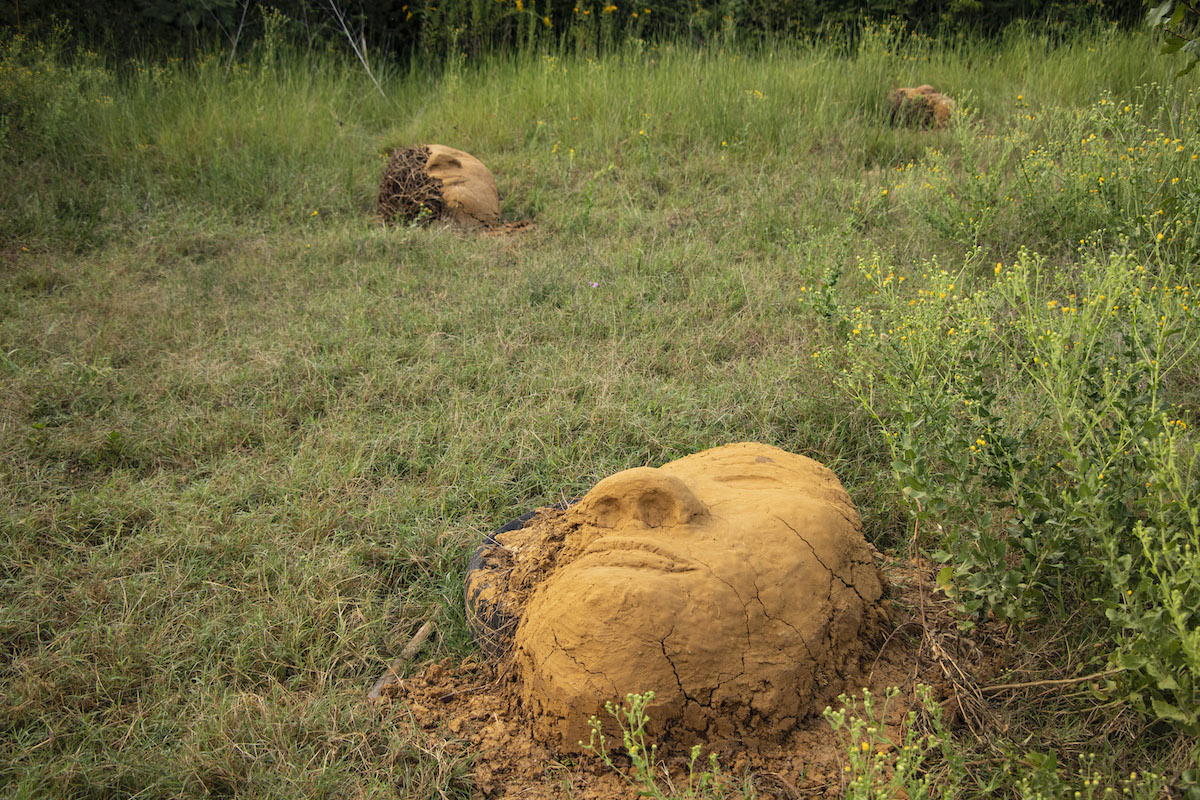
My first impressions with the sculptures, in general, was the idea of these long forgotten and long buried personas of the land that have been faded into, or enveloped by the trash, waste, and modernity impacting the land. The legacy of garbage we/humanity leave behind will affect nature long after the end of the Anthropocene.
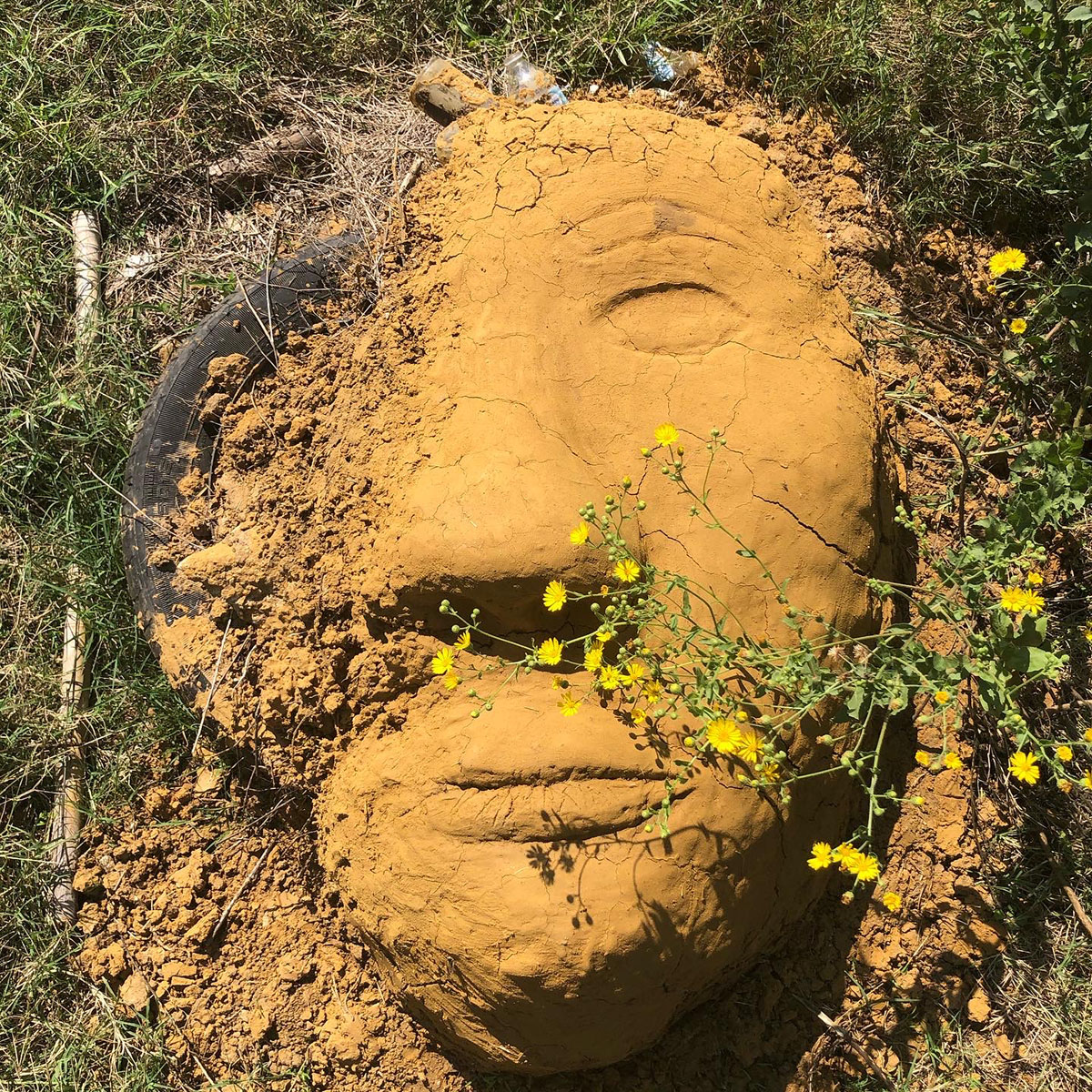
This Tire and Flower one especially evoked an idea of petroleum/rubber/petrochemicals consuming and destroying the earthen spirit. But I love this sculpture because the wildflower is gracing over the face that is cracked and ‘dying,’ but the flower seems to watch over it, attempting to survive with it.
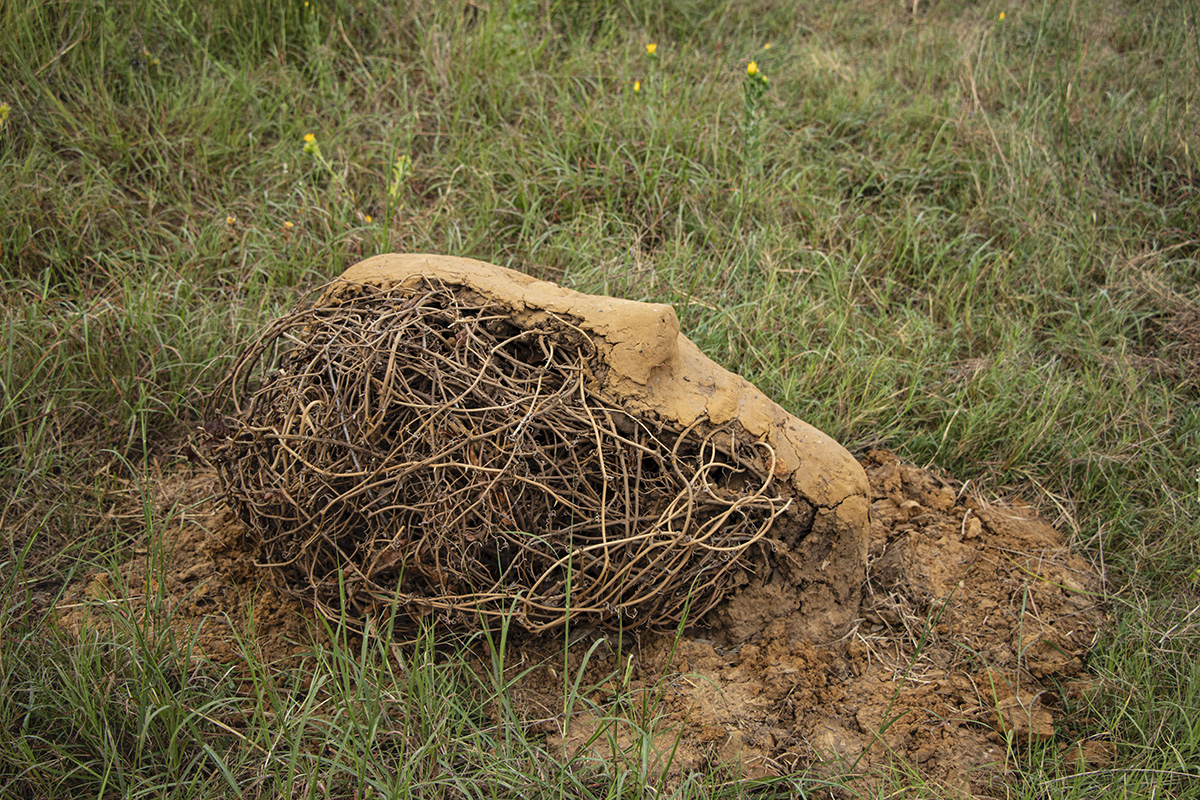
I love the entanglements of the branches, the practice of weaving those and how you shaped them, and coming out of the land persona. It had a similar feeling of the entity being consumed by something other than itself, but this was with natural objects such as vines or sticks, yet it still feels like there is an internal struggle of all the multiplicities and complexities in nature.
Maria: The entanglements also serve as protection or barriers. That’s one of the reasons I began using the Greenbrier vine. Throughout the parks in Texas, I have seen impenetrable thickets of this vine climbing trees and hugging them and dressing them with a leafy cap. The vines are strong and thorny. I had to get leather gloves to handle it. I was inspired by its resilience and strength. In a way, I wanted to be like it, strong and resilient. Perhaps the sculptures can stand in as hybrid portraits for us.

Restorying makes me wonder about the original story of the land. What is its history? What kinds of things has it experienced and seen throughout time? How does land experience life? This inspires a chain of questions about land, experience, nature, humans, life…how do they relate?
I installed a bird feeder on this piece of land because I wanted to feed the birds during the winter cold. It was hard to find a good place out of the squirrels’ reach. It turned out to be an almost impossible task. Now there are corn plants and sunflowers growing below it, the squirrels didn’t eat it after all.
After a few days of spring rain, the grass and plants are so green and full of life. Birds sing and move about. The grass has almost completely covered the sculptures and erased the paths I made a few weeks ago. There are a variety of new flowers blooming and I saw some butterflies too. There is also new trash I haven’t collected.
Plants are consuming parts of the land that were manipulated by people (trash, sculptures, pathways).
Rachel: I noticed the birds flocking around the feeder. They fluttered away and hid in the dead tree when I walked onto the lot. Much of the dirt has washed out of the mud faces now that months have passed and steady rains saturated the area. I noticed some of the dirt washed out and some of the plants were growing back stronger, engulfing the faces and trash.
Maria: Today when I walked to feed the birds, I noticed two big piles of brush that were dumped on the lot. It made me sad. It made me sad to think that people use land as dumping sites.
During the past three years, this small piece of land has become my friend. I walk in it for comfort and to offer comfort, as a friend. It may not need me but I need it. It allowed me to open my mind to it and simply be, no judgement, no expectations, a free and open space. This small piece of land may be forgotten or ignored by society and may even be bulldozed next week without anyone even questioning it or preventing it. Places like this are vulnerable to the growth of urban development and appear and disappear throughout time. This little corner of Denton will forever hold a special place in my memory and with these human-head-shaped sculptures I hope this piece of land will remember me as well.
Conclusion:
We attempted to temporarily adopt the nonconforming lot at 909 Lindsey Street in Denton, Texas in order to connect, re-story, and co-respond to the land that was otherwise abandoned and forgotten – deemed useless by current human definitions. Over time, the land became a collaborative partner in our creative works through physical and interactive installations, inspiration for conceptual projects, and as a co-participant we were required to learn to work with and accept. The land and their nonhuman co-inhabitants permeated through our creative projects, acting as a backdrop, an installation, an artist, a muse, a collaborator, and friend we cared for.

